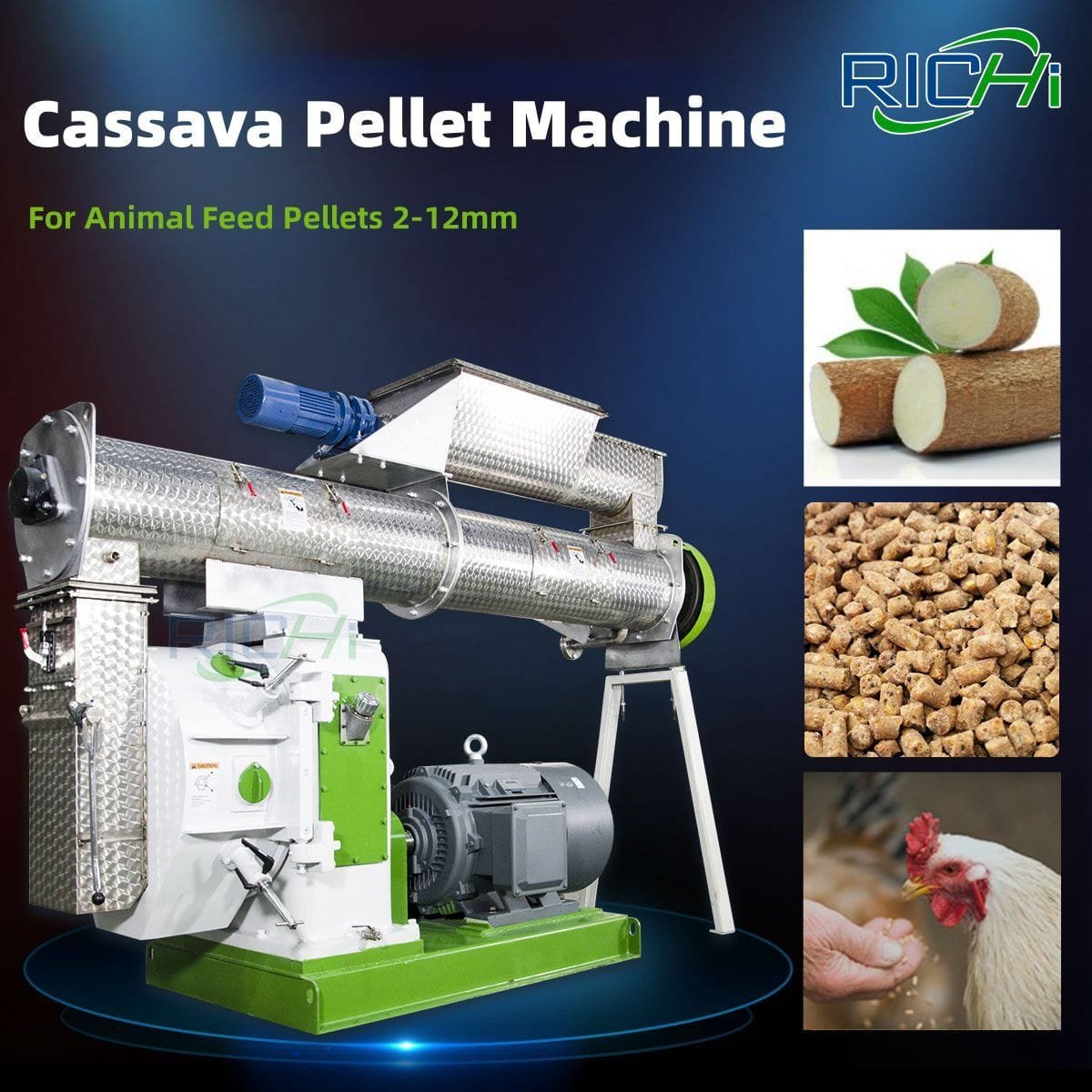In the evolving landscape of animal feed production, the demand for sustainable and efficient solutions has become increasingly crucial. Cassava pellet making machines offer an innovative approach to utilizing cassava, a versatile root crop, as a valuable feed ingredient. These specialized machines play a pivotal role in enhancing sustainability and resilience within the livestock and poultry industries.
The Significance of Cassava in Animal Feed
Cassava, also known as manioc or yuca, offers several advantages as a feed ingredient:
- High Energy Content: Rich in carbohydrates, cassava provides a concentrated source of energy suitable for livestock and poultry diets.
- Drought Tolerance: Cassava is resilient and can thrive in marginal lands with minimal water, making it a dependable feed source in challenging agricultural environments.
- Cost-Effectiveness: Often more affordable than traditional feed grains, especially where locally grown, cassava offers cost advantages in regions with abundant supply.
- Versatility: Suitable for various animal feed formulations, including those for ruminants, poultry, and aquaculture, providing flexibility in feed production.
- Environmental Benefits: Cultivating cassava promotes sustainable agriculture practices due to lower input requirements and reduced environmental impact compared to other crops.
The Role of Cassava Pellet Making Machines
Cassava pellet making machines are instrumental in transforming cassava roots into practical and efficient feed ingredients:
- Increased Shelf Life: By compressing and drying cassava into pellets, these machines extend feed shelf life, reducing spoilage and ensuring long-term storage stability.
- Improved Handling and Transportation: Cassava pellets are compact and dense, facilitating easier handling, transportation, and storage compared to bulky cassava roots or chips.
- Consistent Quality: Advanced machines maintain precise control over pellet size, density, and nutrient composition, ensuring uniform feed quality.
- Efficient Processing: Streamlined workflows integrate drying, grinding, and pelleting stages, enhancing overall efficiency and productivity.
- Versatility: Machines can produce pellets of varying sizes and densities, tailored to specific nutritional needs of different livestock and poultry species.
- Scalability: Available in different capacities, these machines support scalable operations to meet growing demand for cassava-based animal feed.
Key Components of Cassava Pellet Making Machines
Successful operation of cassava pellet making machines involves integrating key components:
- Drying System: Essential for reducing cassava moisture content to optimal levels for efficient pelleting and long-term storage.
- Grinding and Milling: Equipment to achieve desired cassava particle size and texture, facilitating effective pelleting.
- Mixing and Conditioning: Ensures uniform ingredient distribution and moisture levels, critical for consistent pellet quality.
- Pelleting Unit: Core component that compresses and extrudes cassava material into dense, durable pellets through heat and pressure.
- Cooling and Drying: Post-pelleting systems to stabilize pellets and prevent moisture buildup, maintaining quality during storage.
- Quality Control and Monitoring: Rigorous measures including real-time monitoring and laboratory testing to meet stringent nutritional and safety standards.
- Automation and Process Control: Advanced systems ensuring consistent product quality, maximizing operational efficiency, and minimizing downtime.
- Auxiliary Systems: Support equipment like material handling, dust collection, and utilities for safe and efficient machine operations.
Factors Influencing Cassava Pellet Making Machine Success
Critical factors for successful operation include:
- Cassava Supply and Quality: Securing reliable, high-quality cassava roots essential for consistent pellet production and profitability.
- Formulation Expertise: Utilizing skilled nutritionists and formulators to develop optimized feed formulations incorporating cassava pellets.
- Technology and Automation: Investment in advanced technologies enhancing production efficiency, reducing costs, and improving feed consistency.
- Energy Efficiency and Sustainability: Incorporating eco-friendly practices and energy-efficient technologies to lower operational costs and environmental impact.
- Regulatory Compliance: Adherence to feed safety, quality standards, and environmental regulations ensuring sustainable operation.
- Skilled Workforce: Training and employing a competent workforce crucial for efficient machine operation and maintenance.
- Continuous Improvement: Cultivating a culture of ongoing improvement through technology upgrades, process refinements, and innovation to maintain competitiveness.
Opportunities and Future Outlook
The future outlook for cassava pellet making machines is promising, driven by:
- Increasing Demand for Animal Protein: Growing global population and rising demand for meat, dairy, and animal-based products boosting demand for sustainable feed ingredients like cassava pellets.
- Technological Advancements: Continued research enhancing cassava processing, feed formulation, and production processes for improved efficiency and sustainability.
- Sustainable Agriculture Practices: Adoption of sustainable practices, including cultivating resilient crops like cassava, gaining importance in animal feed production.
- Precision Animal Nutrition: Integration of precision techniques optimizing feed efficiency through tailored diets incorporating cassava pellets.
- International Collaboration: Global partnerships and investments supporting development of new cassava pellet making facilities, driving economic growth and technological advancements.
In conclusion, cassava pellet making machines represent a critical innovation in sustainable animal feed solutions, leveraging the versatility and resilience of cassava to meet the evolving needs of the livestock and poultry industries. Investment in these technologies supports sustainable agricultural practices while ensuring efficient and cost-effective production of high-quality feed, contributing to global food security and economic development in agricultural communities worldwide.
Related post: animal feed pellet machine price

